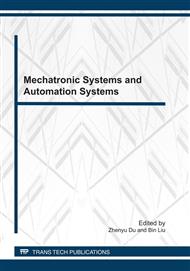p.402
p.407
p.411
p.415
p.419
p.423
p.427
p.431
p.435
Based on the Medical Wavelet Transform Method of Eye Treatment Application
Abstract:
In this paper, a treatment used in medical image processing methods are used, in order to make the patients recover quickly, the key of technology is the use of image processing technology to track the eye center to ensure real-time measurement of wave front aberrations. A multi-scale Canny edge detector is combined with wavelet transform various methods of research, analysis, and the image signal information in the most irregular structure, or by the signal carried by transient phenomena. The dramatic changes in point is usually an important structure in the image Edge, the method aims to select the most suitable instrument for the aberration of the pupil image processing method, image smoothing and edge extraction with the dual effect.
Info:
Periodical:
Pages:
419-422
Citation:
Online since:
June 2011
Authors:
Keywords:
Price:
Сopyright:
© 2011 Trans Tech Publications Ltd. All Rights Reserved
Share:
Citation:


